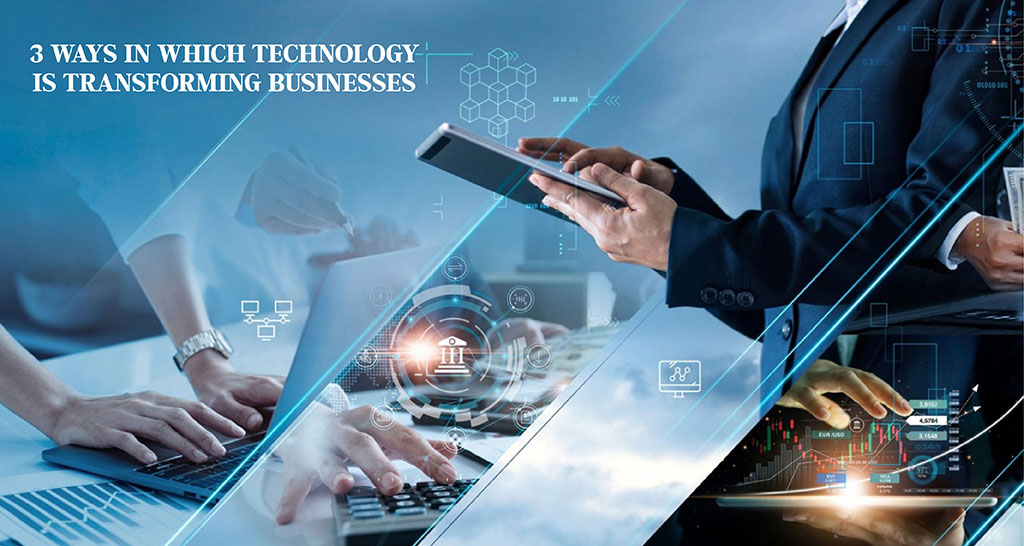Nowadays, businesses have started to completely rely on technology to grow, enhance/manage their daily workflow, and improve productivity. Since innovation is deeply implemented into the notion of technological advancement, that’s why organizations enjoy novel ideas on a regular basis and have the freedom to embrace yet other technological solutions in order to streamline their day-to-day tasks.
From different technologies such as cloud computing, blockchain technology, and Artificial Intelligence, organizations have branched out to embrace more opportunities than ever before.
However, out of all the potential technological techniques or tools in the market, in this article, we are going to take a look at the ones that stand out with their unparalleled performance-improving capabilities. And we hope that after reading this article, you will able to implement them in your business in order to grow better.
3 Ways in Which Technology is Transforming Businesses
Although, there is a long list of technologies that can help companies to stand out in the market. Here are some of the useful ones.
1. Streamlined communications
Communication is critical for every business, and today’s environment provides a number of ways to communicate with your teammates, customers, and stakeholder as well. The advancement in technology has streamlined the communication process by making it very much easier, more secure, and quick.
For businesses technology has revolutionized the way of communication in a number of ways such as by making communication secure, and quick. Not just this, technology has also allowed companies to interact with their customers on different channels or custom-designed platforms.
In addition to interacting with customers, companies are also offering 24/7 live support in order to quickly solve the problems their consumers are facing.
For example, Slack is an instant messaging platform that allows offers a number of handy features that can help companies in streamlining the process of communication with their teammates, customers, or stakeholders. The features include a number of channels (a dedicated space that brings together the right people and information), and voice and video conferencing options.
2. Enhanced efficiency
There is no doubt that we have been surrounded by a number of impressive technologies that are helping us both saving out time and effort as well. And when it comes to transforming businesses, new tools are being introduced in order to enhance efficiency.
Like, from Covid-19, most organizations are turning to digitalize all their work and services. Companies are shifting all their hard-form/scanned documents into electronic data with the help of OCR-based tools for ease of access, and maximum security. There are numerous OCR-based tools available on the internet that help users to extract text from images/scanned documents in a quick and easy way.
To provide you with a better idea, let us explain with an example. We will be using Imagetotext.io for this example. We are going to provide this free tool an image in order to see how it gets a text from it.
In addition to OCR-based tools, companies are also using advanced time management tools such as Timechamp and Timedoctor. Tools like these help organizations and their employees to organize, and scheduled, while also prioritizing their daily tasks.
Finally, businesses also leverage different notes taking so that their employees can capture every point during important meetings, set reminders for important tasks, and organize important information/points in a better way.
3. Personalized online marketing
Personalized online marketing is a process of implementing a strategy by which brands deliver individualized content to their readers with the help of data collection. For business, the goal of using personalized marketing is to truly engage customers by communicating with each as an individual.
In order to use personalized online marketing to transform your business, it is essential to know about the elements that make it a pretty successful marketing strategy.
Data collection: It is a process of collecting all the raw information about both your customers and the market. Doing this will then allow you to create content that will relevant, and informative.
Market analysis: This is a continuous process that refers to monitoring the progress of your content such as monitoring blog post visits, traffic sources, social sharing, and many more.
Action: Without this element, the efforts you have spent on the above-mentioned elements will go in vain. In this element, brands need to decide what type of action they want the customer should take.
All these elements will greatly contribute to increasing overall feedback from customers, improving customer experience and trust, and increasing lead nurturing. Let us further how technology helps in personalized marketing.
For example, Now-a-days cloth-selling brands send emails or newsletters based on age, region, and interest to their specific customers in order to determine what clothing style they want.
Final words
In conclusion, technology has enough potential to become the backbone of every industry. And there is no chance that advancement in technology is going to slow down in the upcoming years. So, businesses that fail to keep up with advanced technological trends might struggle to stand out in the market.
Technology can help businesses in a number of ways such as helping them to automate their working tasks, monitor their performance, and many more.

